
We will be undertaking a field project off Lāna‘i from October 17-27, 2025. This will be our 12th year working off Maui Nui, and our 6th based on the island of Lāna‘i (our last project off Lāna‘i was in July 2024 - check out the web page for that project for more information). The area to the west and southwest of Lāna‘i is a high-density area for Cluster 4 of the endangered main Hawaiian Islands population of false killer whales, and our primary goal is to find and work with members of this population. We are hoping to deploy LIMPET satellite tags to track movements and behavior, collect biopsy samples for genetics and other studies, and, of course, photo-identify as many individuals as possible to better understand how this population is doing.
We will also be working with any other species of whale or dolphin we encounter, and are planning on deploying more of the single-pin Finmount satellite tags with the TADpole system (if you aren't familiar with these tags or this tag deployment system, check out our updates from our June 2025 field project off O'ahu or a talk Robin Baird gave on that tagging work available on our YouTube page. We are hoping to deploy these tags on several species of dolphins, including spinner dolphins, bottlenose dolphins, and pantropical spotted dolphins.
Our field crew for this project will include Mark Mohler, Colin Cornforth, Bethany Steele, Delaney Trowbridge, and Robin Baird. This project is funded by a contract from the State of Hawai'i and a grant from the Pacific Islands Fisheries Science Center, with funding for Finmount tags provided by a grant from Dolphin Quest.
October 24th update
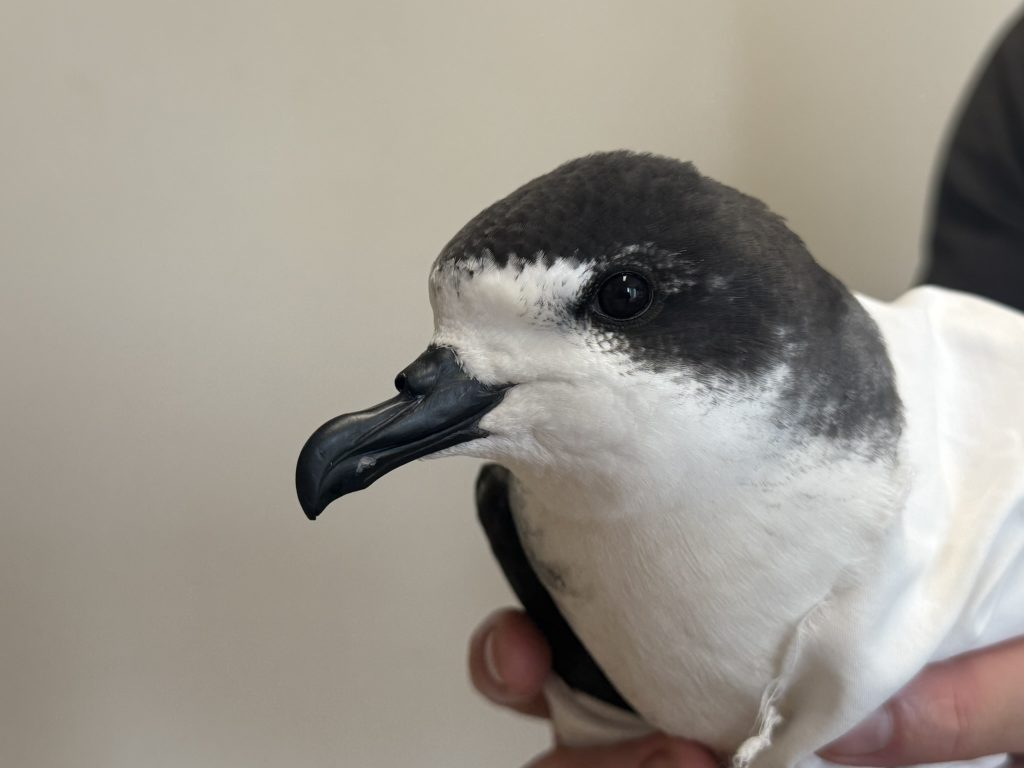
While we were not able to find the entangled false killer whale today, we did find an 'Ua'u, a Hawaiian Petrel, in distress. After consulting with biologists at Pulama Lānaʻi, a sub-permittee of the Hawai'i Wildlife Center, we captured the bird and delivered it to Pulama Lānaʻi to care for it, and it is expected to be released within a few days.
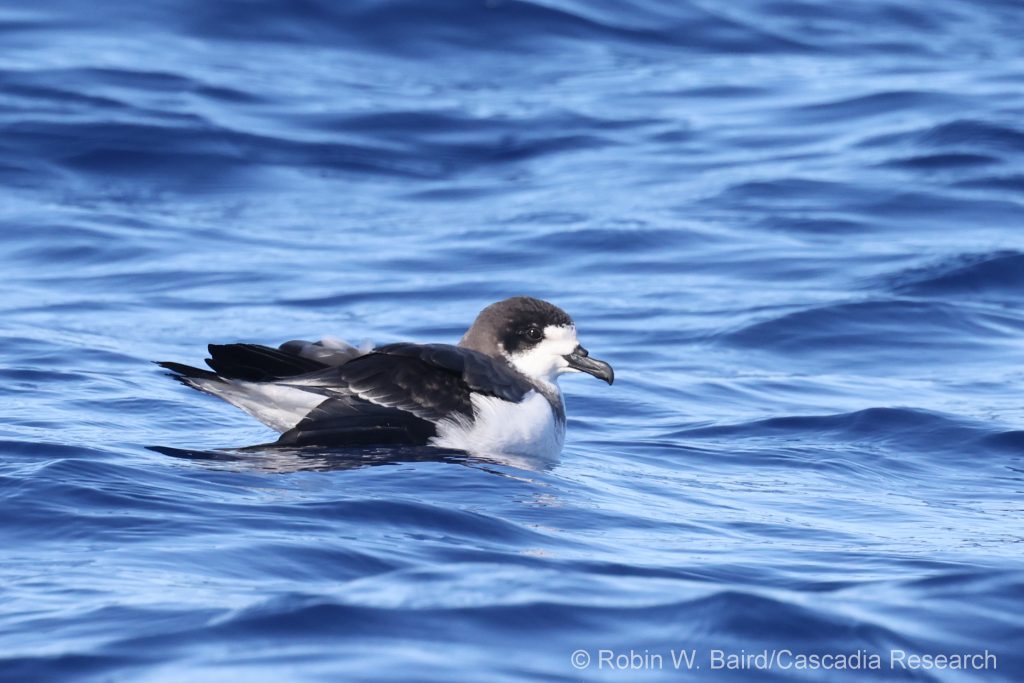
The most obvious indicator that the bird was not doing well was the right wing, which was drooping in the water. While the bird was able to raise both wings it was unable to fly.
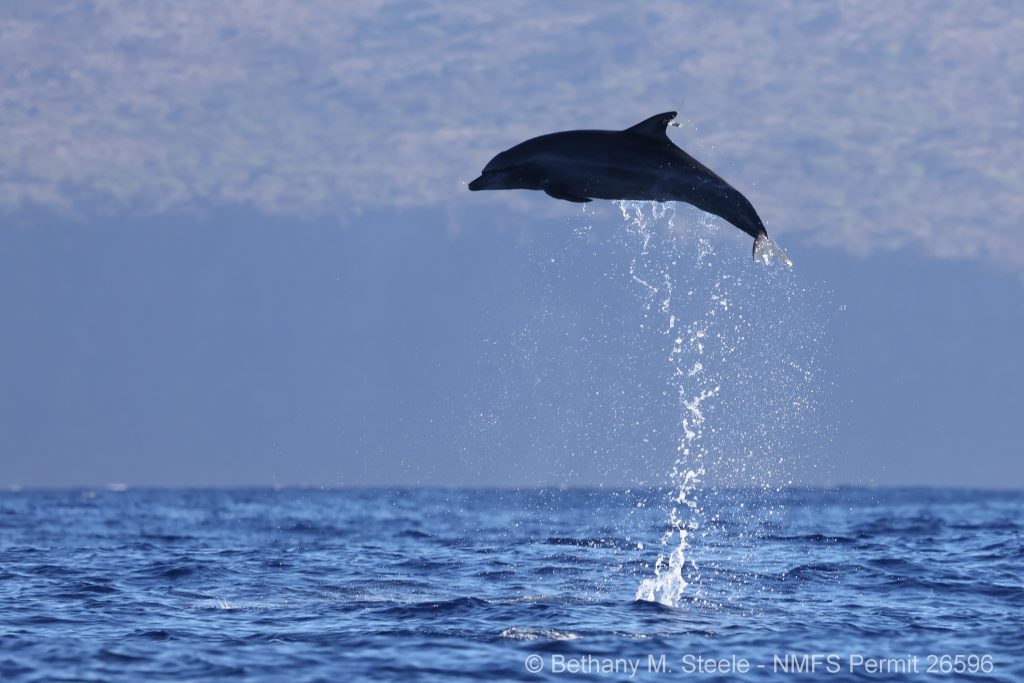
We also encountered a cooperative group of bottlenose dolphins, with the individuals showing lots of interest in bowriding on the research vessel. There are two stocks of island-associated bottlenose dolphins that overlap around Lānaʻi, the O'ahu stock and the Maui Nui stock, and we are trying to better understand the movements and interactions of individuals from these stocks. We were able to deploy a finmount tag on one individual in the group, to be able to track movements. When we have tagged bottlenose dolphins in the past (33 previously in Hawai'i) their typical reaction is a tail flick and a fast dive, but rarely (~10% of taggings) they exhibit these high vertical leaps - in this case the individual did leap after tagging.
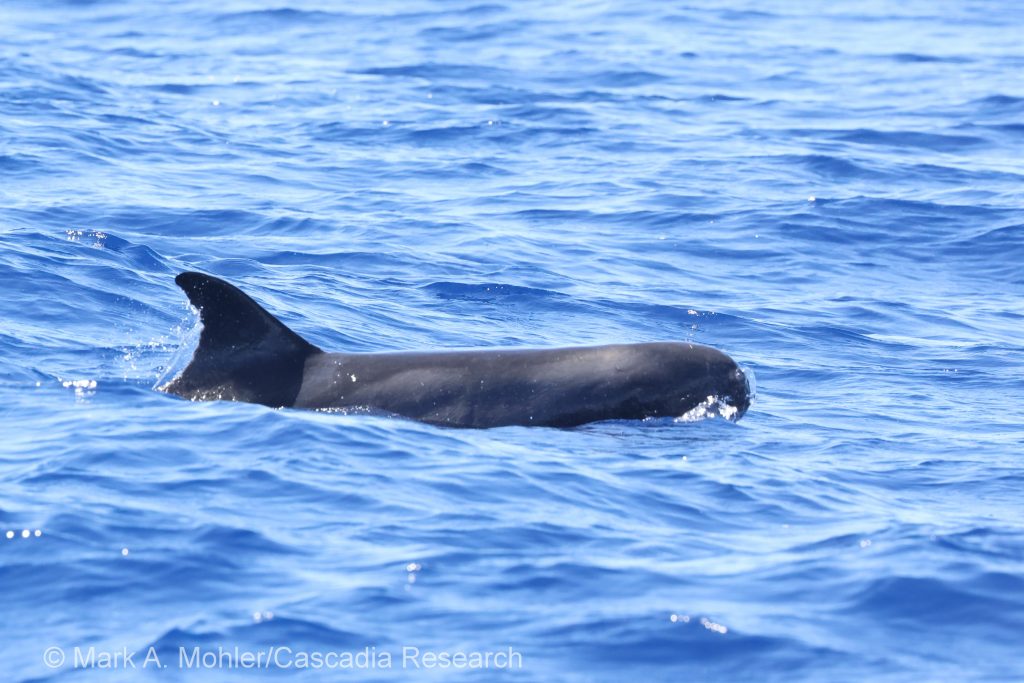
We also encountered our eighth species of whale or dolphin for the trip, a group of three pygmy killer whales. This is a very rarely-encountered species, and in our previous sightings off Lānaʻi the individuals have matched to the O'ahu resident population, so we are looking forward to seeing who these three individuals are.
October 23rd update
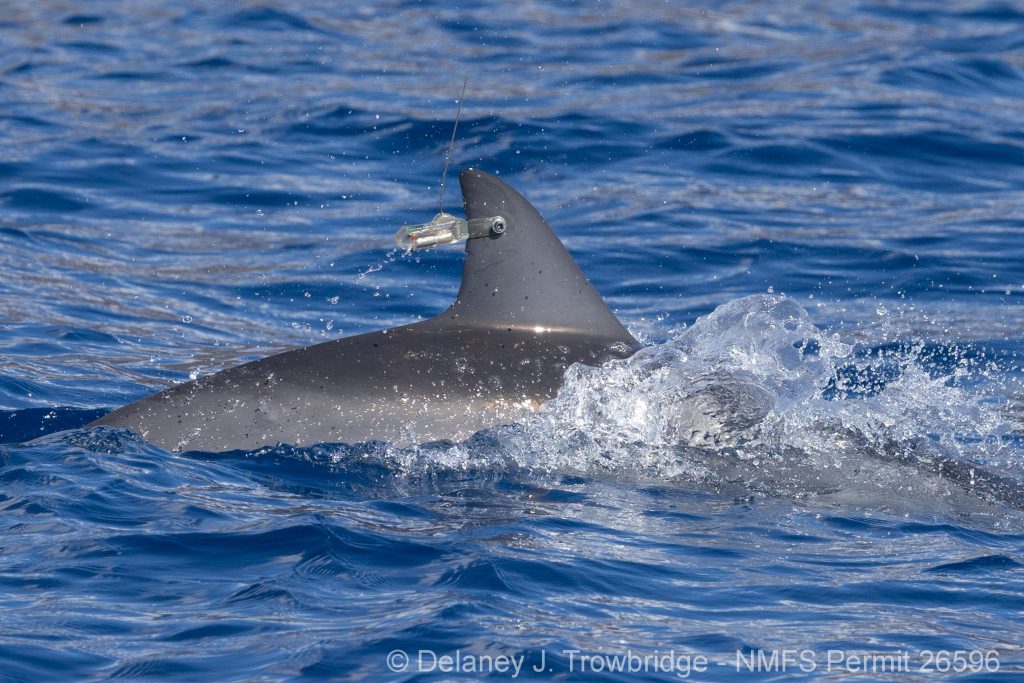
Today we picked up disentanglement gear from NOAA in case we are able to relocate the entangled false killer whale, but our tagged individuals from that social cluster remained far from our study area. With strong winds we worked off the south side of the island with spinner dolphins, and were able to deploy a finmount tag on one individual (photo above) to track it's movements.
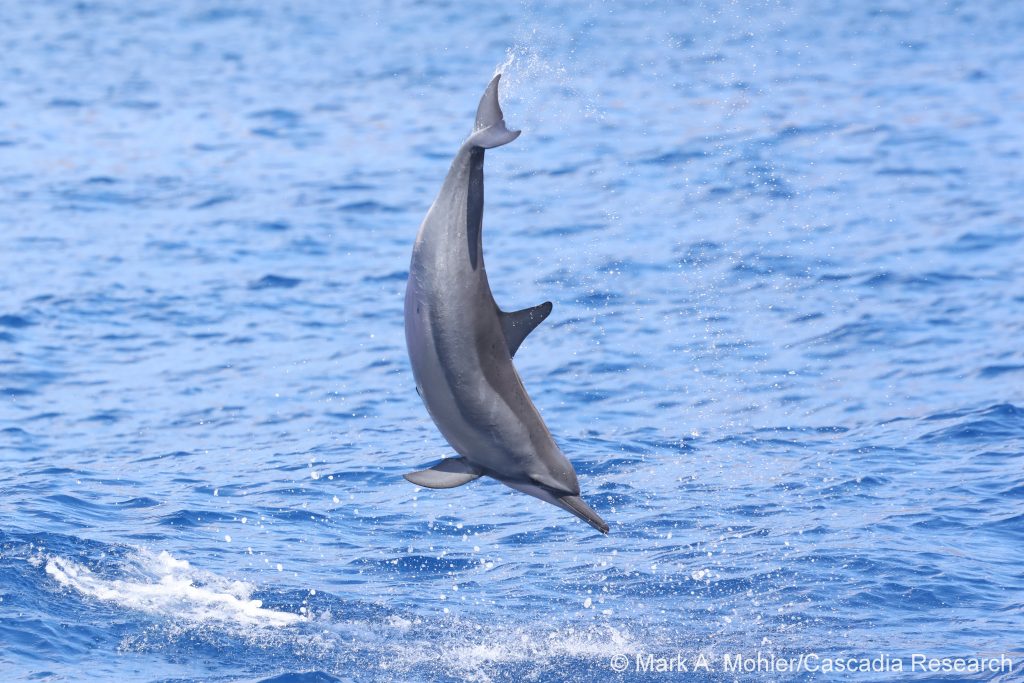
Our tagging of spinner dolphins in Hawai'i began in June of this year with a field effort off O'ahu, with nine finmount tags deployed. This is the first satellite tag ever deployed on a spinner dolphin off Maui Nui. If you are interested in information on movements and spatial use of spinner dolphins around Maui Nui, a paper published in 2020 in Marine Ecology Progress Series can be downloaded here.
October 22nd update
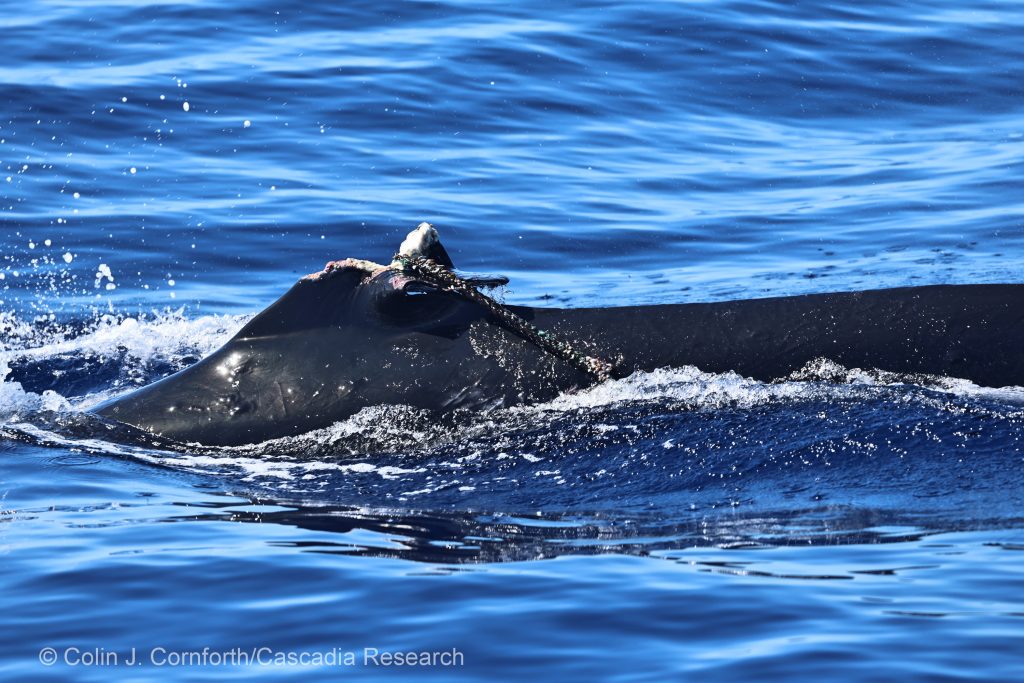
Today we encountered HIPc373, an adult male from Cluster 4 of the endangered main Hawaiian Islands population of false killer whales, entangled in marine debris. We spent our time trying to document the nature of the entanglement with photographs and drone imagery, to inform any future disentanglement effort. The entanglement is in a line that appears to be in a loop, and is slicing through the dorsal fin and appears to be wrapped around the body. We last saw HIPc373 during our July 2024 field project in good health. We have been in contact with NOAA disentanglement experts to discuss plans in case we are able to re-locate HIPc373 over the next few days.
October 20th update
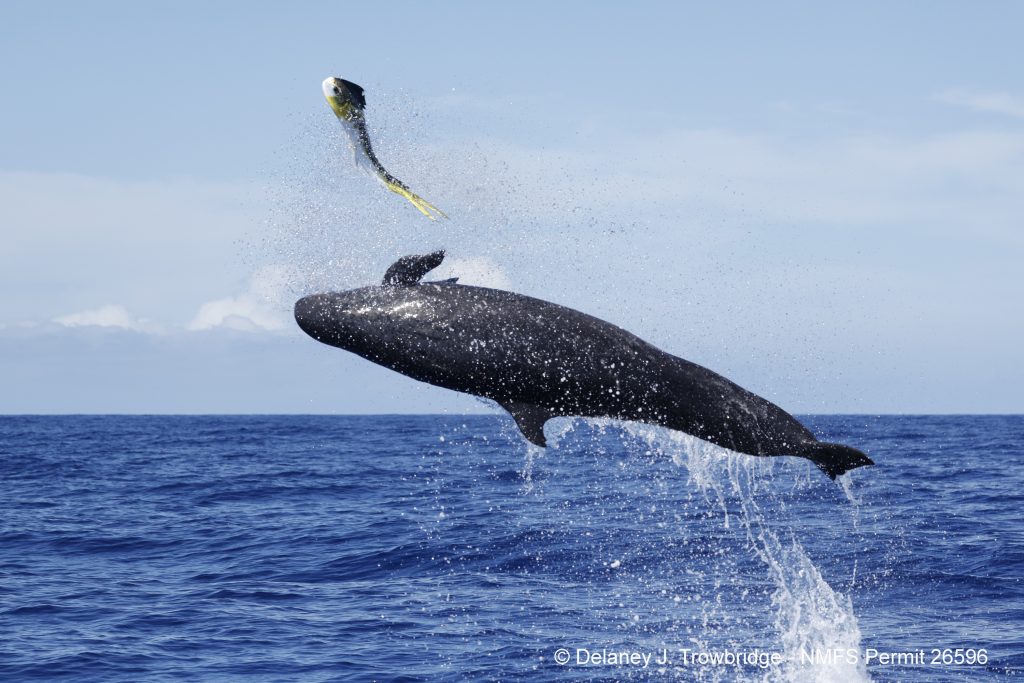
Today we encountered our primary study species for the trip, false killer whales! While they were widely spread out, we were able to get identification photos of most of the individuals present (about 8 or 9) and identified them as members of the endangered main Hawaiian Islands population. We witnessed several predation events on mahi mahi, like the one above.
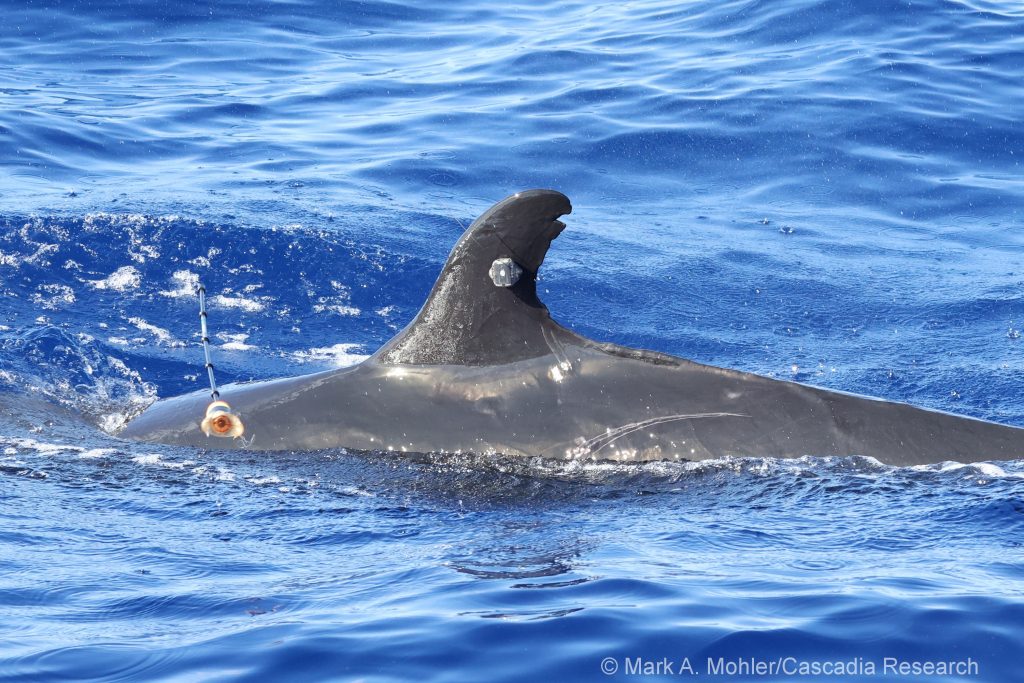
We were also able to deploy two LIMPET satellite tags, to track the movements of the group. One of the individuals tagged is HIPc214 in our catalog, an adult female from Cluster 1. The other individual is from Cluster 4.
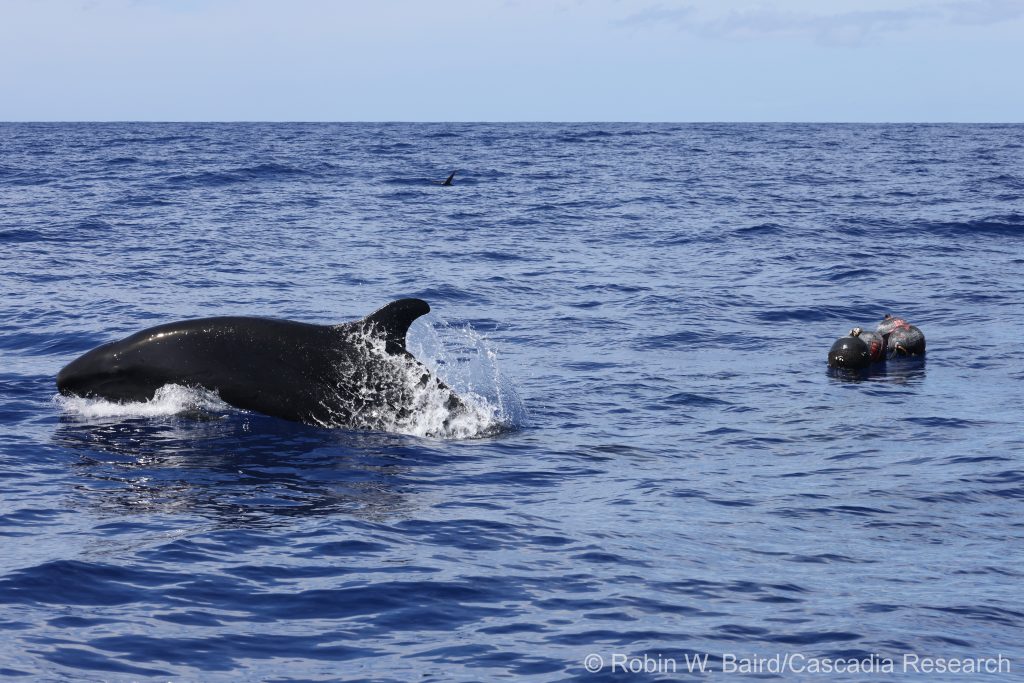
We also observed the false killer whales hunting around a private FAD (a Fish Aggregating Device). In Hawai'i, any structure in the water, whether it be floating debris or an anchored FAD, tend to attract small fish, which attract larger fish, and some fishermen anchor their own FADs in order to increase their fishing success. While we have often seen false killer whales hunting around floating debris, normally we've seen them bypassing the State FADs when we've been with them.
October 19th update
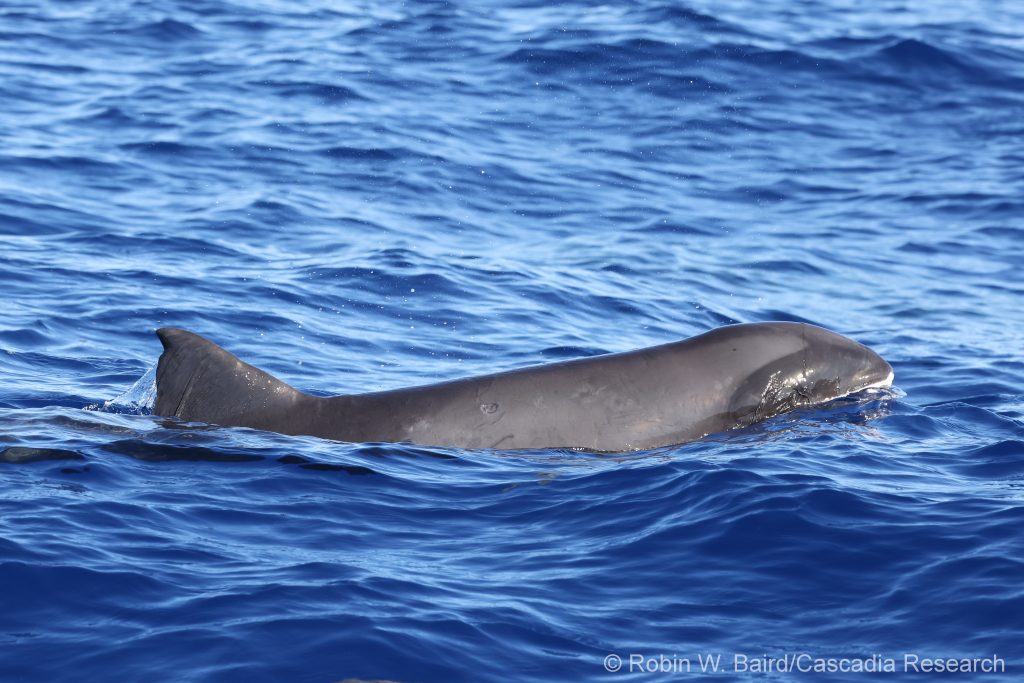
Today was our second day on the water. While the weather has not been great, we've able to cover almost 200 km and have encountered four species of whales and dolphins, including one humpback, three groups of pilot whales, spinner dolphins, and a large group of melon-headed whales. The melon-headed whale above clearly shows the facial mask and dark dorsal cape typical of this species.
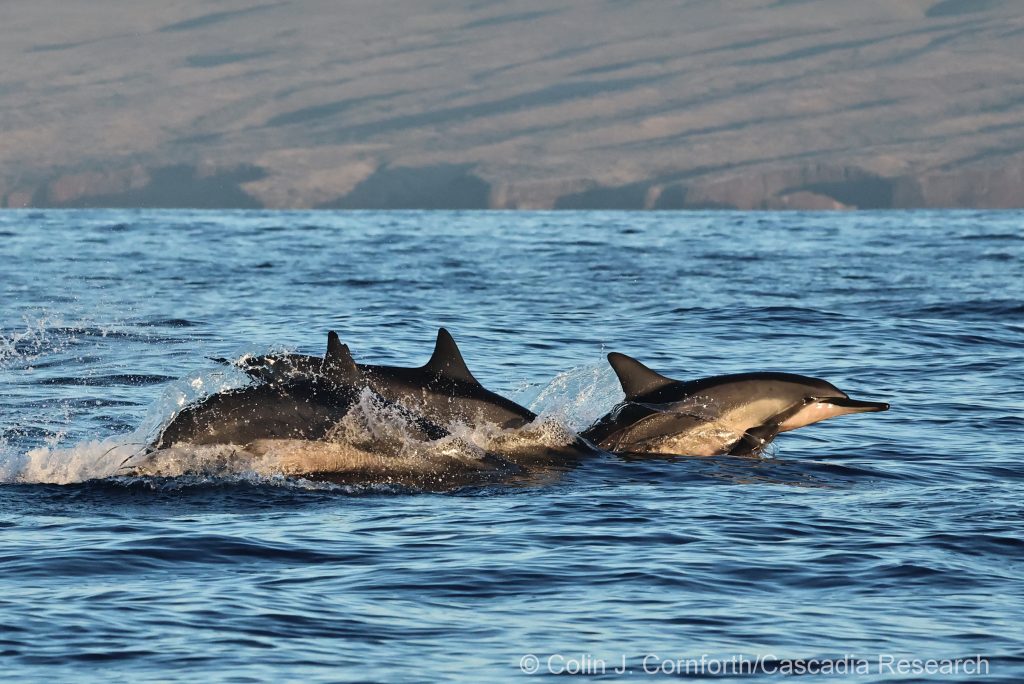
We've encountered spinner dolphins both days, but they've been either moving quickly or in rougher waters, so we haven't had any opportunities to deploy finmount tags.
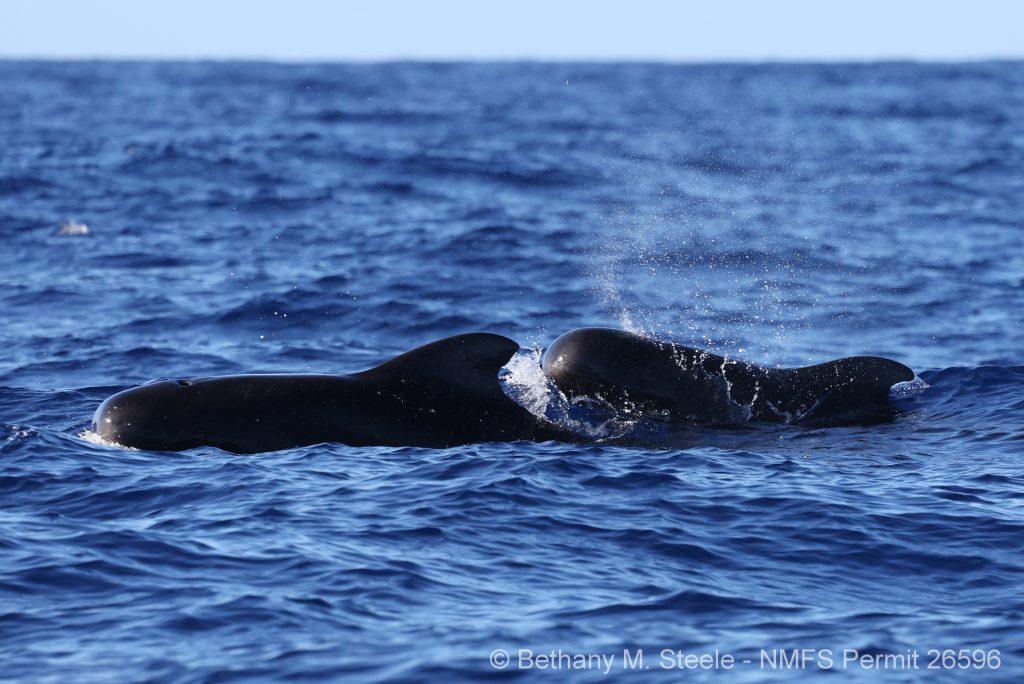
Today we had three different groups of short-finned pilot whales in the deep water west of Lāna‘i, and were able to get identification photos of most of the individuals present. There is a resident community, termed the "central community" of pilot whales that use the waters west of Lāna‘i and extend up along the edge of Penguin Bank and to O‘ahu.
All photos on this page are taken under NMFS Scientific Research Permit No. 26596. For more information on this project contact Robin Baird at rwbaird (at) cascadiaresearch (dot) org